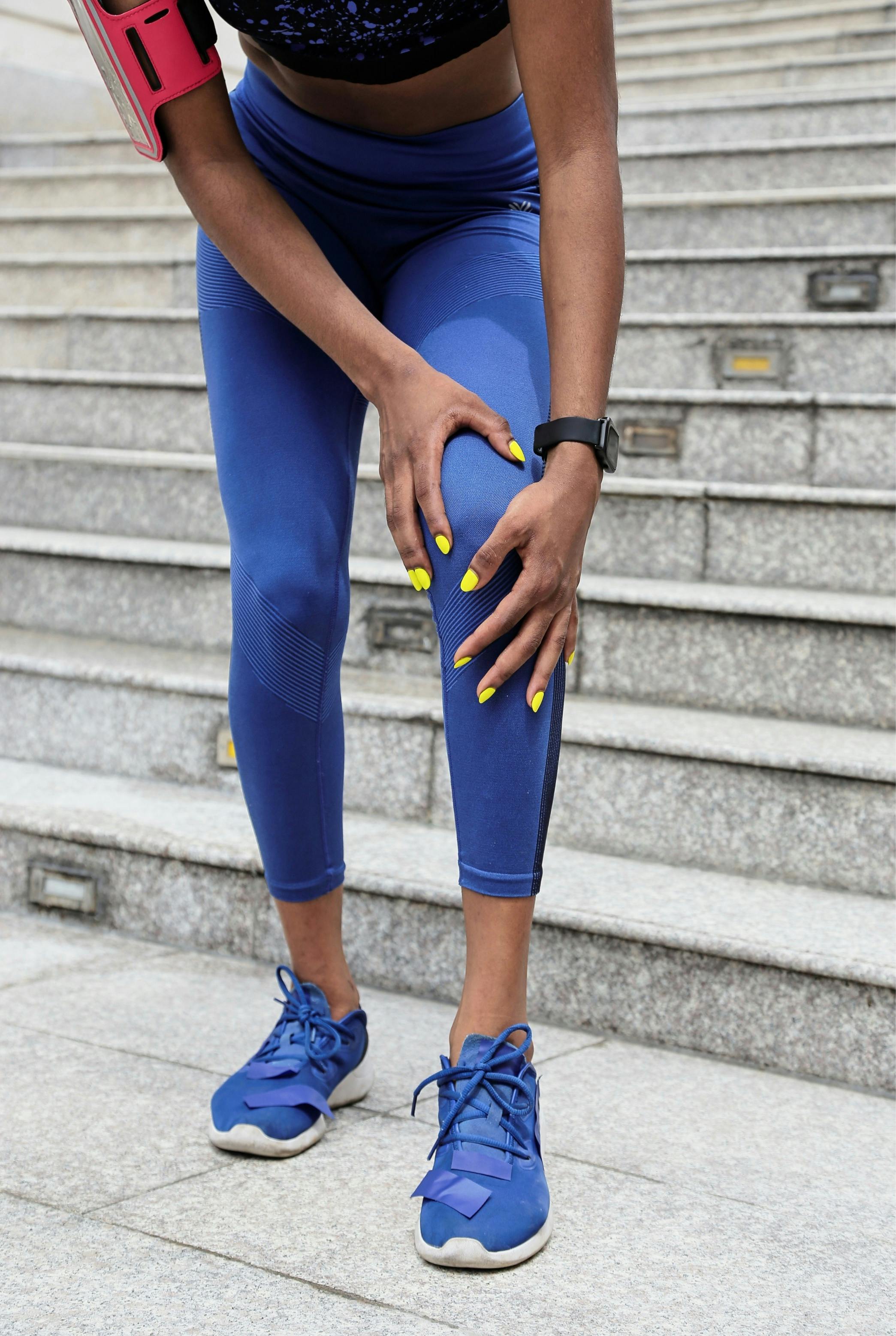
Runner’s knee or Patellofemoral Pain Syndrome (PFPS) involves pain radiating from the patellofemoral joint, which is located around the knee cap. You may have PFPS if you experience pain while walking up and down the stairs, sitting for a prolonged period of time, or engaging in other physical activities. Other symptoms of PFPS may include “clicking” or “grinding” with bending or straightening the knee, knee buckling, weakness, instability, or stiffness.
What causes it?
PFPS can have a variety of causes, including:
- Structural defects
If the position of your patella is deviated, it can create muscular imbalances of the surrounding tissues, which often results in pain or discomfort. Common structures affected are two of your quadriceps muscles, the Vastus Medialis and the Vastus Lateralis. - Sudden increase in activity/excessive activity or overuse
Increasing your frequency, duration, or intensity of activity can cause excessive loading through the patella femoral joint. Increased running or high impact sports/activities, or starting a new activity, could all contribute to onset of PFPS. - Tight surrounding structures or weakness muscles surrounding the knee
If the structures surrounding the knee are weak or not flexible enough, this may contribute to muscle imbalances, impairing function of the joint. For example, weakness of the quadriceps and tightness of the IT band can cause the knee cap can be pulled to the side from its normal position, almost like a train moving off the tracks. Tight hip muscles may create an imbalance and pull on your knee cap during running, jumping, or single leg activities, which can cause pain at the knee.
What can I do to avoid Runner’s knee?
Strengthen those quads
Incorporate straight leg raises and squats into your strength training routine. Pro tip: remember to keep your knee as straight as possible during straight leg raises and, when you squat, try not to let your knees cave inward and keep your back straight!


Tighten your core
Try a “dead bug” exercise to help strengthen your ab and back muscles. Pro tip: keep your core engaged as you alternate moving your arms and legs.

Stretch your hamstrings and calves
Tight hamstrings can increase pressure between patella and femur, creating excessive forces on the knee. Tight calf muscles may also increase posterior forces on the knee, causing pain or excessive foot pronation. Pro tips: remember to keep knee as straight as possible during the hamstring stretch, and keep the back knee straight as you bend your other leg towards the wall during the calf stretch.


Improve your balance
Try a “single leg stance” to help with overall stability. Pro tip: keep your butt and quad muscles engaged to maintain single leg stance.

Sources
Cleveland Clinic. (2018). Patellofemoral Pain Syndrome (PFPS) | Cleveland Clinic. Cleveland Clinic. https://my.clevelandclinic.org/health/diseases/17914-patellofemoral-pain-syndrome-pfps
Patellofemoral Pain Syndrome (Runner’s Knee). (2019). John Hopkins Medicine. https://www.hopkinsmedicine.org/health/conditions-and-diseases/patellofemoral-pain-syndrome-runners-knee
Zumo, K. (2017). Patellofemoral Pain Syndrome. Physiopedia. https://www.physio-pedia.com/Patellofemoral_Pain_Syndrome
